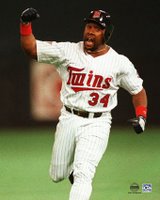By Jennifer Reinbrecht
revised by Alysen Hargrove
Taylor Hargrove, is doing what every little kid dreams... playing pro baseball.
Hargrove started his baseball career in the Southeast Denver Baseball League, but was able to shine in the state at Thomas Jefferson High School in Denver, Colorado. He lettered 4 years in soccer and baseball at TJ. “We went to the state championship in 1997 my sophomore year for baseball. And I kicked for the football team in 1999 for two playoff games. We lost in the final four to Pomona."

But baseball was his first love. “Losing the state championship got my attention” Hargrove said. “Up until then, baseball was my god, my main priority. After that loss, I wanted to just give it up. But my Pastor coached me through it. He said ‘God gave you a gift. You should stick with it. What other ways can you use it?’ So I decided I could serve God through sports.”
At 5 feet, 7 inches and 180 pounds, Taylor is smaller than most of today’s prototypical athletes. He was scouted by Division 2 schools, including Nyack College, along the upper Hudson River in New York. Taylor chose Nyack first because of its strong ministerial program, second for its baseball program and a “sweet” scholarship. New York it was, and a degree in pastoral ministry.
“My Senior year in college, 2003, I was hoping to be a late round draft pick by the Phillies. The summer before I ran a 6.54 60-yard dash and played so well I was getting some attention. Plus, I was having an amazing senior year leading the Conference CACC in 11 out of 13 offensive categories. My college coach ran into the same regional Phillies scout and talked about how well I was doing. Excitement built for me as the taste of the dream was getting sweeter.
But Jesus had something else in store for me. I partially tore the MCL in my knee in the last two months of the season. It hurt deeply but there was something special about only having Christ to rely on. Despite only playing half of the season I was still named Conference Player of the Year and Honorable Mention All American.”
The following year, in April, 2004, Hargrove found favor with Triple A Manager of the New York Mets, John Stearns. He was in extended spring training with the Mets for 12 days. “I had a great tryout and got the opportunity of a lifetime. It was an awesome experience,” Hargrove says, the “awe” still in his voice. “Everything after that has been icing on the cake.”
After being released from the Mets he signed with the Quebec City Capitals. “My journey was one of pro ball, or being a baseball missionary, or both.” Hargrove would like to be both pastor and player to his team. “Being on the team takes the pastor off the pedestal,” he says. “If I’m on the team I’m playing with them. They’re my friends, my brothers...I know the temptations, the joys, the sorrows, the pain. If I’m their chaplain, then I only see them at home games, plus I’m not living with them every day. It’s not the same.”

“I was with Quebec for a month, then traded to the Richmond Roosters in the Frontier League. I was playing play a lot, but then got released out of no where. Over 30 guys got released during the time I was there. At that point, I was out of money and I was tired. So after 5 months of traveling, tryouts and trades I went home to recoup and get out of debt. I had covered over 25 states, 7000 miles of driving and two countries.”
In 2005, Hargrove was given the chance to play for the Sioux City Explorers in Sioux City, Iowa. He played with them the whole season and his family was able to come and watch him play, something they could not do while he was in school in New York and playing in Canada.
This will be Hargrove’s third year playing pro ball. This season he’s headed to Rockford, IL and the Frontier League’s Rockford River Hawks.
Hargrove is a second baseman and shortstop but he’s learned to be a utility player. “I’ll do whatever it takes to get on the field,” he says.
He’ll report May 8th for tryouts, and if his team makes it to the playoffs, the season goes into September. And there's always the possibility of being picked up by “the Show”...if that's meant to be.
What does a minor league player pull down? “I get about $850 a month, plus a host family to live with, and they might feed me. Or not” he adds. “We get $18/day on the road for meals. Sometimes we’re sponsored, or sometimes a ‘clubby’ will provide peanut butter and jelly sandwiches, or .99 soup. Hey, it’s not bad to be able to do something you love!”
Now 24 years old, during the off-season Hargrove is an Assistant Coach at Thomas Jefferson for the varsity baseball team. He also teaches private hitting lessons at Mark Johnson’s Triple Crown, and is a substitute teacher. He is working towards his ordination and also preaches from time to time.
“It has been an amazing story that God has written and I thought I would share it. There is a Psalm that says 'delight yourself in the Lord and He will give you the desires of your heart.' I learned that and am still learning that, as the journey with God and baseball continues. I would label it living the dream.”
You can catch Taylor Hargrove and the Rockford River Hawks at
rockfordriverhawks.com . Their season kicks off in May.






